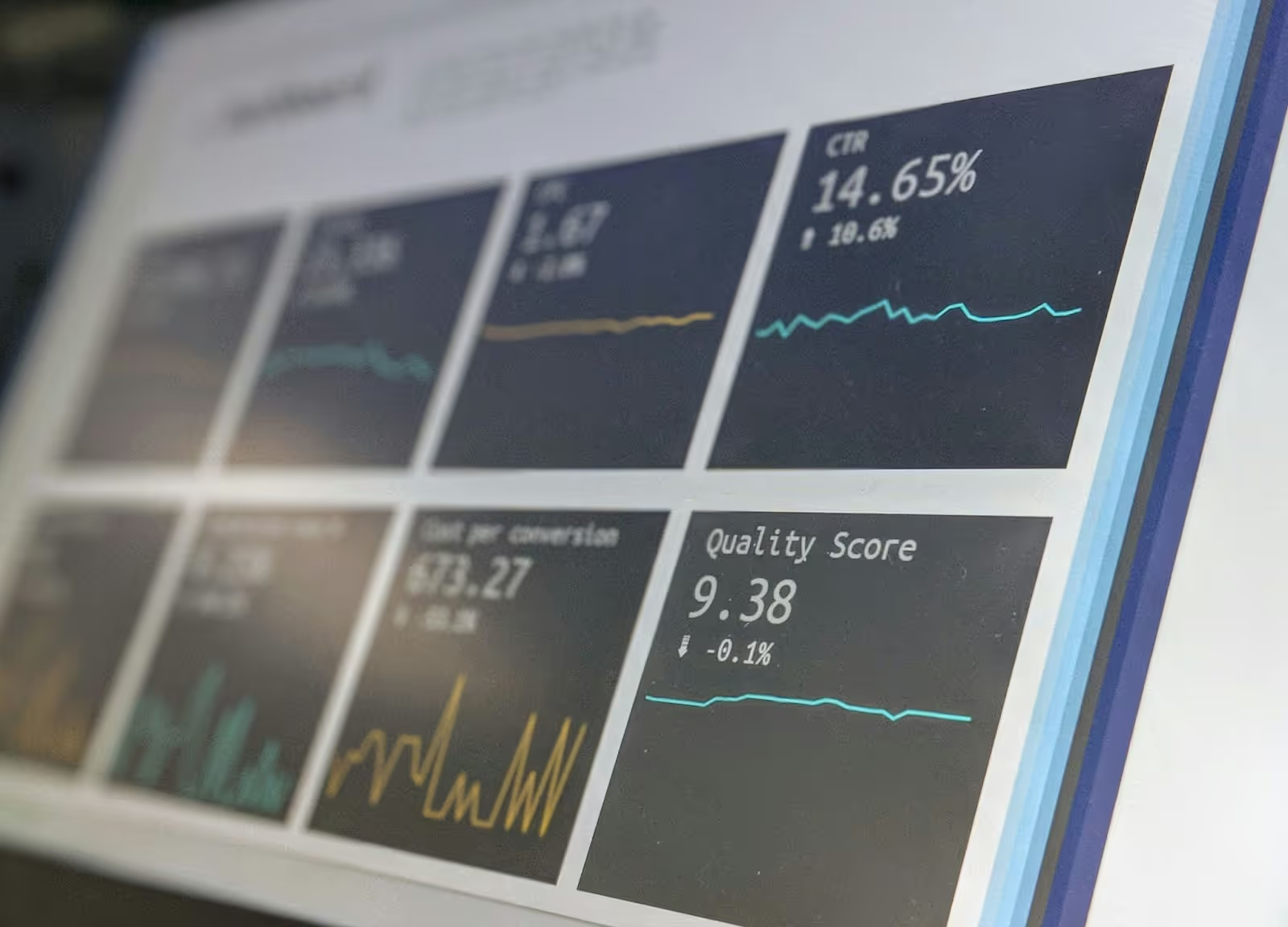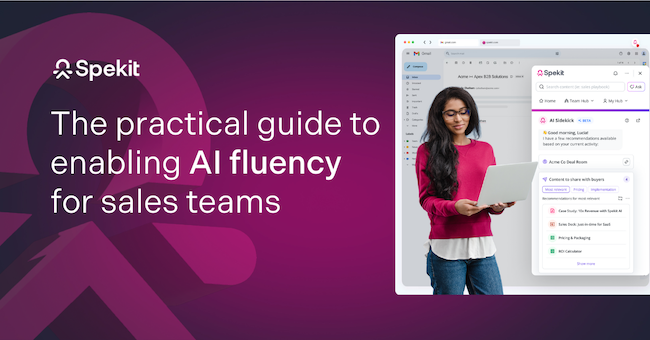Sales forecasts can make or break a company’s financial future, as a benchmark study by InsightSquared and RevOps Squared found that 68% of companies miss their forecast by more than 10%. An accurate forecast can mean better planning for your company’s financial performance.
Sales forecasting can boost your revenue enablement and give your sales team the keys to success, helping you utilize your data more efficiently. But what exactly is sales forecasting? And how do you do it?
What is sales forecasting?
Sales forecasting is an expectation of a company’s sales revenue in a specified time period. These financial projections enable companes to better set their quotas and ensure they’re on track to meet their goals.
Why is sales forecasting important?

Sales forecasts can affect a company’s financial performance. With optimized sale forecasts, companies can improve their economic predictions, which impacts a number of components of their business.
Make informed decisions
Sales forecasts rely on in-depth data analyses to paint a picture of companies’ economic standing, their market, and their competitors. Data-driven decision-making, such as making decisions based on sales forecasts, has been shown to result in 4% higher productivity and 6% higher profits, according to an MIT study.
Anticipate future demand
Predicting your future sales performance can help you know what to expect when it comes to your product demand. By knowing what to expect of a company’s sales ahead of time, they can ensure they have the proper amount of inventory, staff, and other aspects of their business they need to meet the demand.
Optimize financial planning
When a company uses sales forecasting, their calculations and predictions help them to see how much revenue they expect to come in the future. The sales forecast enables them to better budget and ensure they’re keeping their finances in line with their expectations for the future.
Support overall business growth
According to Gartner, 50% of sales leaders say that sales enablement will support customer-facing teams in the next three years. Sales forecasts can ensure a company implements the right sales enablement strategy, as well as provide the proper sales enablement content to support their sales professionals as they grow the business.
Download our free sales forecasting template ->
Popular Sales Forecasting Methods
Sales forecasting models and methods utilize different strategies and tools to ensure that companies are creating sales forecasts that work with their industry and unique needs.
1. Opportunity Stage Forecasting
One of the most common sales forecasting models, opportunity stage forecasting, looks at current sales opportunities and breaks down the sales pipeline into multiple stages. Sales professionals will look at the movement of leads through their pipeline and identify areas for improvement to better target these leads and close deals.
Best for: Companies with a long sales pipeline
2. Length of Sales Cycle
Length of sales cycle sales forecasting relies on a company’s historical sales cycle length, as well as customer behaviors and demographics, to determine when a deal is likely to close. It enables a company to better understand their pipeline and set realistic expectations on when a sales representative is likely to make a deal with a new or returning buyer.
Best for: Established companies with sales and customer data
3. Historical Forecasting
As the name implies, historical sales forecasting methodology relies on historical data to make predictions about future sales performance. Essentially, they look at the past, both in terms of their own company and their industry as a whole, to anticipate the future.
Best for: Companies with shorter sales cycles and seasonal market trends, like retail
4. Lead-Driven Forecasting
Lead-driven sales forecasting looks at a company’s current leads and assigns them a value to determine the likelihood of their conversion and profitability of a deal with them. To create this value, a salesperson will look at where the lead came from and how similar leads acted in the past based on consumer behavior analytics.
Best for: Companies that receive a high number of inbound leads
5. Multivariable Analysis
In many ways, multivariable analysis sales forecasting pulls from many of these other sales forecasting models and then goes a step further. Multivariable analysis sales forecasts utilize multiple variables, such as customer demographics, sales cycle length, economic conditions, and competitor activity, to determine what the company can expect in sales in an upcoming period.
Best for: Companies highly invested in data analytics, maintaining high-quality data, and having a high sales budget
6. Intuitive Forecasting
Intuitive sales forecasting relies less upon data and more upon personal experience and judgment. The company will often take into account the intuition of multiple key stakeholders to form the sales forecast before making any major financial business decisions.
Best for: Companies in industries where historical data may not indicate the future as the market is more volatile, as well as newer companies that don’t have their own historical data to rely upon
How to Create an Accurate Sales Forecast
Accuracy in your sales forecast can prevent you from being one of 68% of companies that miss their sales forecast by more than 10%. A more accurate forecast means better preparations for your financial future. These steps can give you a precision boost.
Download our free sales forecasting template to get started ->
1. Determine how far out to forecast
How far out to forecast depends on a company’s sales forecasting model. However, no matter what sales forecasting model a business uses, it’s best not to forecast too far in advance, as market and economic conditions can fluctuate and affect their actual sales.
They should also continue to monitor their forecast and compare it to their actual sales, as they may need to pivot their forecast to address unforeseen circumstances.
2. Examine previous sales data
With the help of sales enablement tools, a business can collect and analyze sales data and receive actionable insights on how they can implement the information into their sales playbook.
Since bad data costs companies an average of $12.9 million per year, according to Gartner, maintaining the integrity and quality of a business’s data to make their sales forecast is crucial.
3. Analyze historical and market trends
By using historical data, a business can make data-driven decisions, which has been shown to give companies an ROI boost.
Meanwhile, integrating data on market trends into a sales forecast enables a business to prepare for industry shifts throughout the year, which is especially helpful for companies that experience seasonal sales shifts.
4. Consider overall business strategy
Businesses focused on customer acquisition might find that they need a different sales forecasting model than companies focused more on retention. Business goals and strategy affect a sales forecast, as each company has unique challenges and priorities.
It’s also worth considering how sales forecasting can affect different departments, and a business’s sales team shouldn’t be the only ones who impact the sales forecast. Marketing departments, among other teams, can also offer insight into projected business growth.
5. Monitor the competition
With competitor analytics, a business can gain insight into not only their competition but their industry as a whole. Companies should look for their competition’s target audience, business structure, content strategy, social media performance, and SWOT analysis, which stands for your competitor’s strengths, weaknesses, opportunities, and threats.
Integrating competitor data into a sales forecast enables businesses to better prepare for market fluctuations and the impact of their competition’s sales on their own sales.
6. Adjust the forecast based on actual data
Creating a culture of continuous improvement boosts companies’ productivity and improves the accuracy of their financial projections.
With the assistance of a sales enablement tool, businesses can use the data they’ve collected to compare actual sales data to a sales forecast and make adjustments to set them on a path toward sales success. This sales projection template can help you keep track of your sales forecast and make necessary adjustments.
.png)
Sales Forecasting Best Practices
According to Gartner, only 45% of sales leaders are confident in their sales forecasting accuracy. These best practices can give a sales forecast an accuracy boost.
1. Choose the right sales forecasting method for your business
While companies with a longer sales cycle might turn to opportunity stage forecasting, businesses with a shorter cycle might find historical forecasting gives them more accurate financial projections.
Choosing the right sales forecasting method means making better predictions. Before picking a sales forecasting method, consider your sales cycle length, industry, sales budget, and access to customer and sales data.
2. Use a sales forecast template
By using a sales forecast template, businesses can optimize their resource management, setting up their sales team for success.
These sales templates ensure there’s no accidental oversight into a crucial part of the sales planning process and that sales representatives have the tools they need to see the sales forecast become reality. Using a template takes more manual work off your plate and helps you to not miss any details that you might have overlooked otherwise.
Download the ultimate sales forecasting template
3. Focus on quality data
Poor-quality data results in decisions that aren’t as data-driven as a sales team would hope. When businesses have poor-quality data, they make decisions based on an incomplete or inaccurate picture of their sales, market, competition, and customers.
Consider utilizing a sales CMS platform to help your sales team and other departments share sales data, maintain the quality of that data, and prevent the growth of data silos. Many of these platforms also help you analyze data, offering AI sales tools that enable a business to turn data into actionable insights.
4. Evaluate your entire sales forecasting process
With the majority of companies saying that they miss their sales forecast by more than 10%, businesses should always be looking for ways to improve their sales forecasting process.
If you’re finding that your sales forecasts aren’t coming to fruition, you may need to rework your sales forecasting process, such as by using a different method or model, pulling in data from different sources, or utilizing the knowledge and expertise of different teams throughout your company.
More questions on sales forecasting
Let’s dive into a few common questions on how companies can better implement sales forecasting for their financial projections.
How often should a company update its sales forecast?
With only 45% of sales leaders confident in their sales forecast’s accuracy, it’s important to update sales forecasts based on actual data frequently. Compare sales forecasts to actual results either monthly or, at the very least, quarterly. Then, make updates based on the comparisons to get back on track.
What are the main factors that should be considered when creating a sales forecast?Several factors impact a sales forecast. including:
- Industry and what you sell
- Economic conditions, such as a recession or new business regulations
- Customer demographics and behavior
- Competitors and their growth
- Sales cycle length
- Sales budget and the size and efficiency of your sales team
The factors used to determine a sales forecast vary depending on the sales forecasting model being used.
How can a business improve the accuracy of its sales forecast?
One of the best ways to improve the accuracy of a sales forecast is by ensuring the quality of the data being used to create the forecast. In addition to utilizing a tool like Spekit Analytics to collect data, you should also adopt a system of data governance in your company, which enables you to utilize team members and processes to maintain the integrity of the data.
You should also compare your sales forecast to your actual sales several times throughout the year to ensure you’re on track to meet your forecast. If you’re not, you may need to rework your sales forecast and the process you used to create it.
Improve Your Sales Forecasting Process
Sales forecasting can boost your business and help you better plan for the future. With the right methodology, you can stay ahead of your competition, prepare for any economic conditions, and improve productivity amongst your sales representatives.
Wondering where to begin? Spekit’s sales forecasting template provides a starting point from which you can jump into a brighter sales future.







